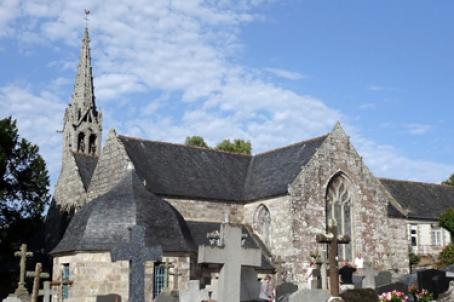Quimper Cathedral
The current cathedral occupies a place where several sanctuaries have succeeded one another and of which the historian knows little, due to the lack of texts and archaeological excavations.
The current cathedral occupies a place where several sanctuaries have succeeded one another and of which the historian knows little, due to the lack of texts and archaeological excavations.

The construction of the chapel adjoining the college began in 1666, according to the plans of the Jesuit architect Charles Turmel. The model proposed is that of the Jesuit novitiate in Paris, built according to the plans of Father Martellange in 1630, but the construction, which was to take four years, was not completed until 1748. The Jesuit style is characterized by a sobriety of lines and the splendour of the decoration. The architects, who were inspired by the "Roman Baroque", often kept the triangular pediment, decorating it sometimes with volutes and sometimes with columns.

The Trinity Church on Missilien Street is a fine example of a parish enclosure with three founding elements: the placister, the calvary and the fountain. The church is built in an enclosure bounded by a wall, the placister. Just to the left of the entrance, there is a stone blocking the entrance, which can be easily stepped over by man: it is the impassable stiles for animals that prevent them from wandering around in the parish enclosure. It is easy to imagine the cows wandering through this corner of the countryside.

A parish belonging to the bishopric of Quimper and to the country of Cornwall, Locronan is very ancient linked to the history of the duchy of Brittany. This important centre of pilgrimage known for its Troménie (or procession), will benefit from the donations of the Dukes of Brittany, in particular for the construction of the church erected in the form of a cathedral by the will of Anne of Brittany from 1424 to 1480. The Penitentiary Chapel adjoining the listed church in 1845 houses the bed of St Ronan. In addition to the magnificent 15th-century glass masterpiece and the pulpit for preaching, the church contains a beautiful piece that needs to be restored to ward off the ravages of time: the Altarpiece of the Rosary.